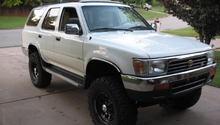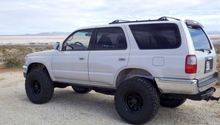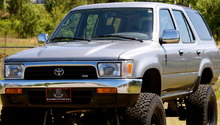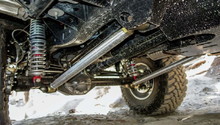Toyota 4Runner 1984-1995: Buying Guide
Click here to discover what makes the (1984-1995) Toyota 4Runner a reliable truck for off-road enthusiasts and everyday drivers alike.
This article applies to the Toyota 4Runner (1984-1995).
The Toyota 4Runner is a mid-size sports utility vehicle with a two-door body style. Built for ruggedness and highly rated for consistency in delivering a dynamic performance across a range of road and weather conditions, the 4Runner is a reliable vehicle that, on average, is able to reach hundreds of thousands of miles on the road without the need for too many repairs. Like other SUVs on the market; however, you will need to follow your regular maintenance schedule to achieve the greatest number of mileage on the odometer.
Inspection Checklist
Before purchasing a used 2nd Gen 4Runner, it's highly recommended that you inspect the interior and exterior of the vehicle for wear and leaks as well as major system and/or component damage. A normal check should look for signs of corrosion, particularly along the underbody of the vehicle, engine damage, and body damage. If your budget allows, it's highly recommended that you consider opting for a 3rd Gen (1996-2002) 4Runner. For many, the increased power, dependability, improved performance and increased cabin space are all well worth the extra money you'll spend on the new model year.

What to Include on your Inspection Checklist
Before purchasing a 2nd Gen 4Runner, check for the following:
- Extensive modifications or the installation of a truck lift kit, any of which might render the vehicle ineligible for relevant safety recall repairs
- High corrosion on panels, the frame or underbody
- A manual versus an automatic transmission
- A milky substance in the radiator or engine oil reservoir
- Damage to the head gasket or timing belt
- Broken tie rods
- Squeaky or rough braking
- Poor play in the steering wheel
- Leaks (e.g., brake fluid, engine oil, coolant, etc.)
You might want to hire a professional to carry out a pre-purchase multi-point inspection. Doing so could end up saving you thousands in the long run, which you could put towards a 3rd Gen (or later) vehicle.

2nd Gen 4Runner Secrets
Follow these tips and you'll enjoy your truck for years to come:
- Keep the tailgate dry to avoid a build up in corrosion (an aftermarket replacement may not be available)
- Replace the head gasket and/or timing belt if either contains a high level of rust
- If a rear window isn't working, troubleshoot the switch (it might be dirty) or relay box located behind the driver's seat
- With good maintenance, the 2nd Gen 4Runner could achieve 300,000 miles or more
- If the vehicle sits too low, have it leveled; check for a high level of rubbing when the car is in motion

Commonly Asked Questions
How sporty is the 1984-1995 4Runner compared to the 1996-2002 model year?
The 1984-1995 4Runner is designed to be sporty (e.g., demonstrating exceptional off-road capability); however, it is not nearly as 'sporty' nor 'rugged' as the 1996-2002 model year. If you will be doing a lot off-roading, it's highly recommended that you consider purchasing a 1995-2002 4Runner.
Is the 4Runner prone to corrosion?
In areas where there is snow and moisture, the frame could experience corrosion. Always check the tail gate for moisture that has become trapped inside the window seal, as this could cause rust, and remove salt from the underbody regularly.
Should I invest in better coil springs if sagging occurs?
Yes, if sagging does occur, it's highly advisable to invest in new coil springs. (Check for safety recalls pertaining to the rear suspension; sagging coil springs could pose a safety concern, which might entitle you to a free repair through your local Toyota dealer.
Related Discussion
- Buying Tips - Yotatech.com






